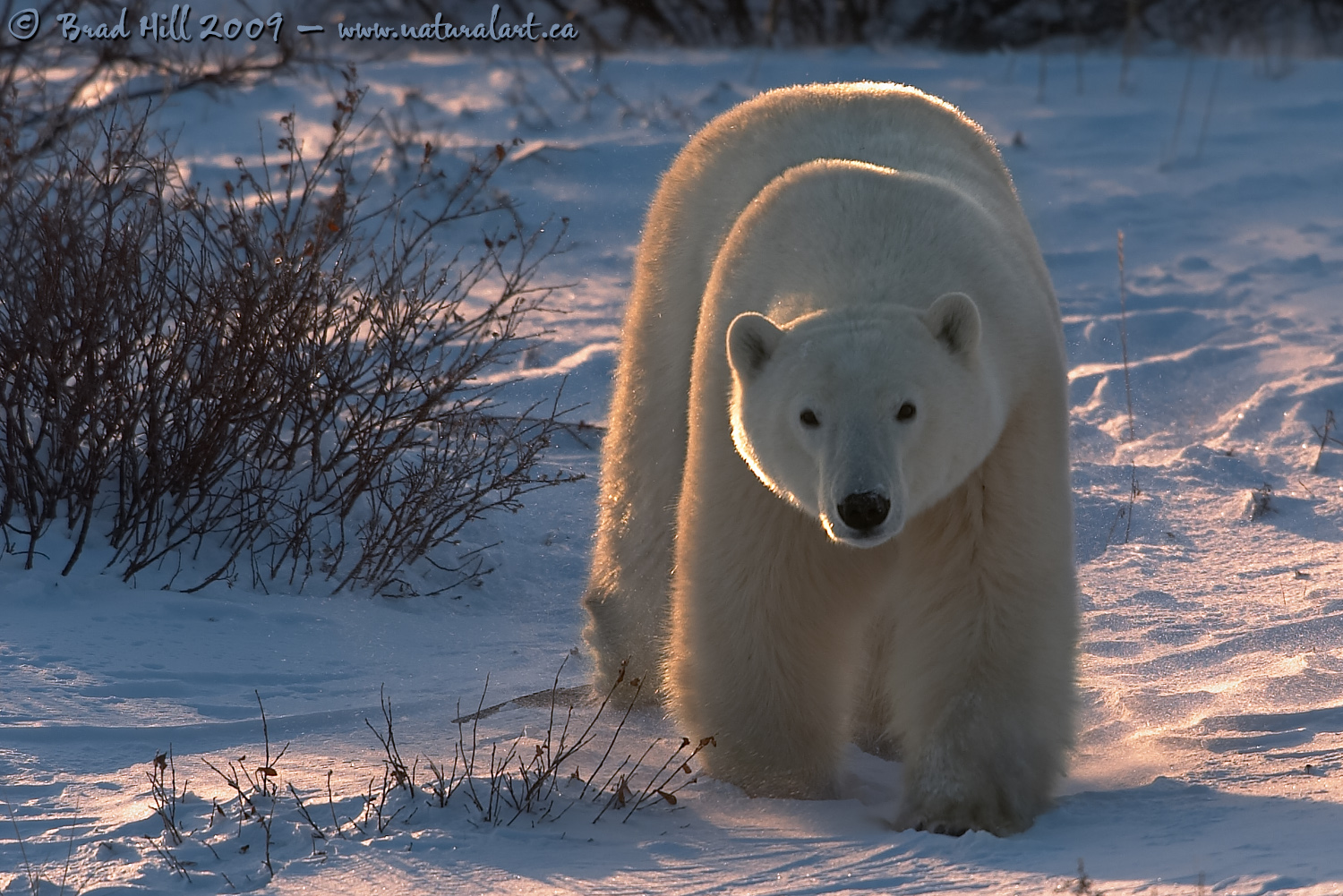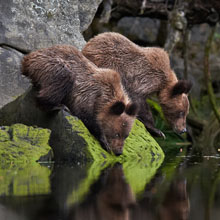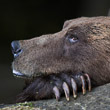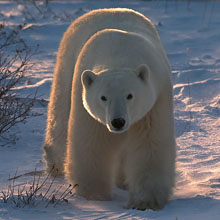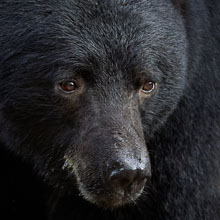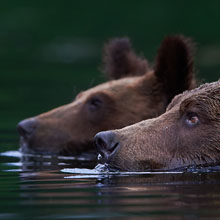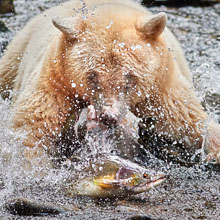Availability: Limited Edition Print
In the Field
Arctic Arches. Cape Churchill, MB, Canada. October 26, 2004.
It's easy to forget when photographing strong, dramatic subjects that you still have to consider lighting, composition, and technique. This male Polar Bear seemed to decide to give us all the ingredients for a super photo on a silver platter. By closely approaching (or stalking?) us with the sun directly at his back, he gave us lighting more dramatic than you could create in a controlled studio setting. The biggest challenge was to react quickly enough to gauge the changing light (and, of course, to adjust your camera's exposure settings accordingly) as the bear started moving laterally relative to the sun. I chose to sacrifice a small amount of highlight detail (in the arch-like rim-lighting on the bear's back and shoulder) in order to capture more details in the shadowed region of the head and front legs.
ADDITIONAL NOTES:
1. This image - in all resolutions - is protected by copyright. I'm fine with personal uses of them (including use as desktop backgrounds or screensavers on your own computer), but unauthorized commercial use of the image is prohibited by law. Thanks in advance for respecting my copyright!
2. Like all wildlife images on this website, the subject(s) is/are fully wild and completely unconstrained. Besides the potential impact of my/our presence, nothing has been done to intentionally alter or affect the ongoing behavior of the subject and, of course, there has been no use of any form of bait or other form of wildlife attractants (including vocalizations or other sounds).
Behind the Camera
Arctic Arches. Cape Churchill, MB, Canada. October 26, 2004.
Digital Capture; Compressed RAW (NEF) format; ISO 200.
Nikon D2H with Nikon 200-400 mm f/4G ED-IF AF-S VR lens @ 400 mm (600 mm equivalent with digital conversion factor) supported on bean bag.
1/250s @ f6.3; +0.3 stop exposure compensation from matrix-metered exposure setting.
At the Computer
Arctic Arches. Cape Churchill, MB, Canada. October 26, 2004.
RAW Conversion to 16-bit TIFF, including first-pass sharpening, using Phase One's C1 Pro. Multiple RAW conversions (3 at different exposure settings) to extend dynamic range of captured image, in this case primarily to restore shadow detail on head and front legs of bear.
All further digital correction on 16-bit TIFF file using Adobe's Photoshop CS, including compositing and masking of various exposure versions, selective saturation enhancement, selective application of cooling filter, and selective sharpening for web output.
Conservation
Arctic Arches. Cape Churchill, MB, Canada. October 26, 2004.
Ten percent of the revenue generated by this image will be donated to the Yellowstone to Yukon Conservation Initiative.
Species Status in Canada*: Special Concern (November 2002).
Polar Bears (Ursus maritimus) are the largest terrestrial carnivores on the planet and the most carnivorous of all bears. They are highly specialized and feed almost exclusively on Ringed Seals. Polar Bears hunt their prey from ice sheets and are dependent upon these ice sheets for their survival.
Like any highly-specialized organism, Polar Bears are highly susceptible to habitat alteration. Climate change - natural or human-induced - is probably the greatest long-term threat to Polar Bear survival. The longer ice-free seasons experienced in the southern reaches of their distribution is already making it difficult for them to hunt.
The Yellowstone to Yukon (Y2Y) Conservation Initiative seeks to ensure that the world-renowned wilderness, wildlife, native plants, and natural processes of the Yellowstone to Yukon region continue to function as an interconnected web of life, capable of supporting all of its natural and human communities, for current and future generations.
For more information on the status of Polar Bears in Canada, go to: http://www.speciesatrisk.gc.ca and search under "Polar Bears".
*as determined by COSEWIC: The Committee on the Status of Endangered Wildlife in Canada












